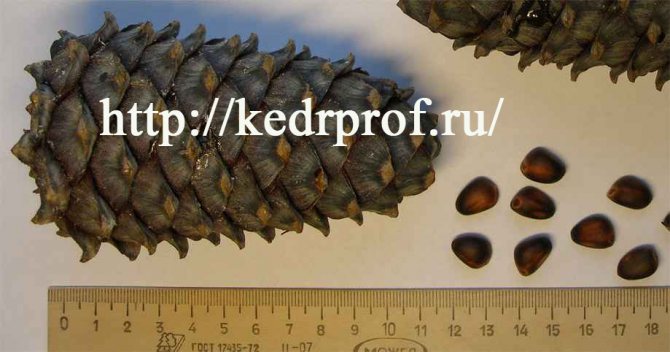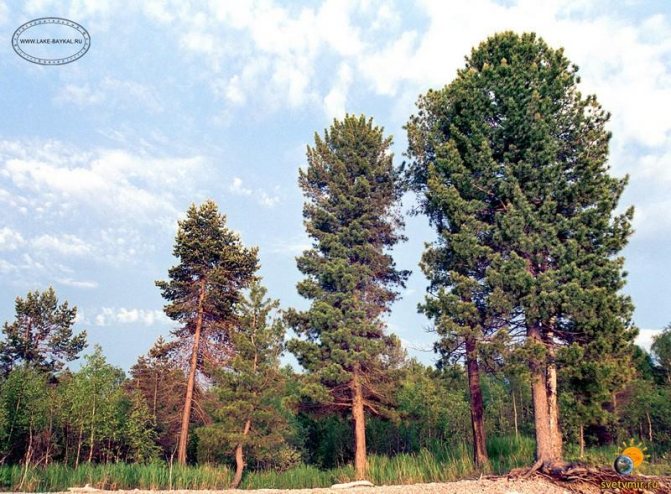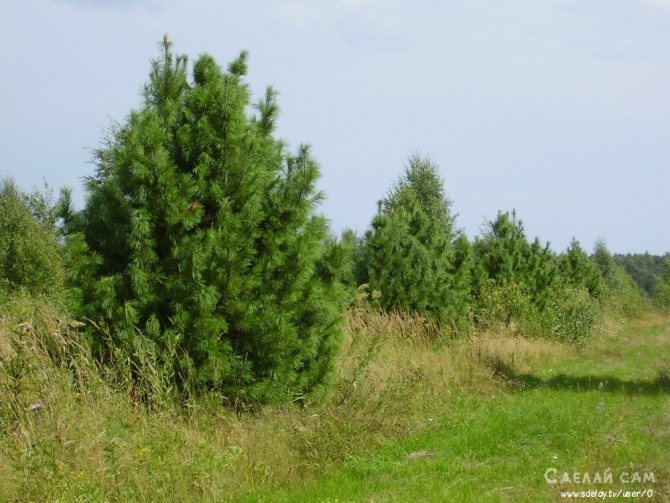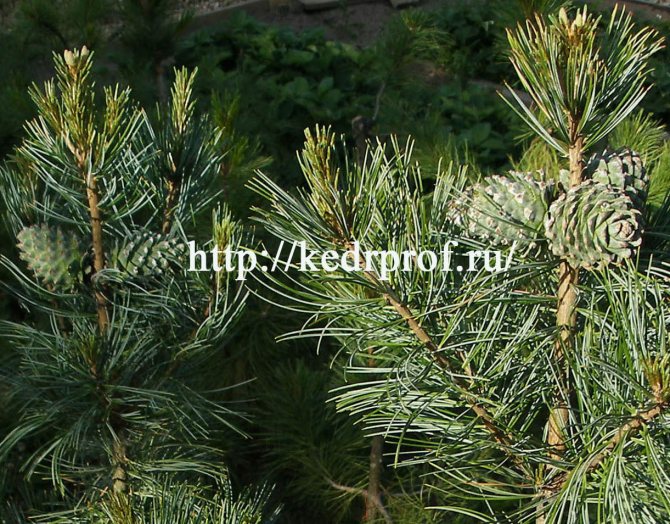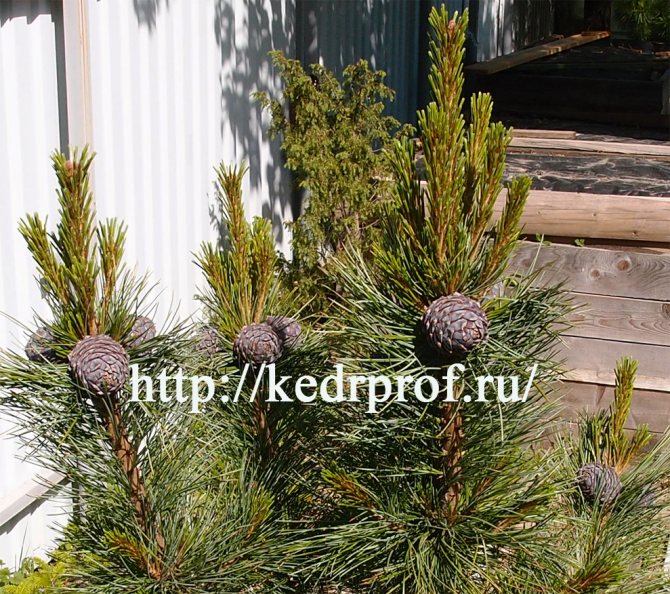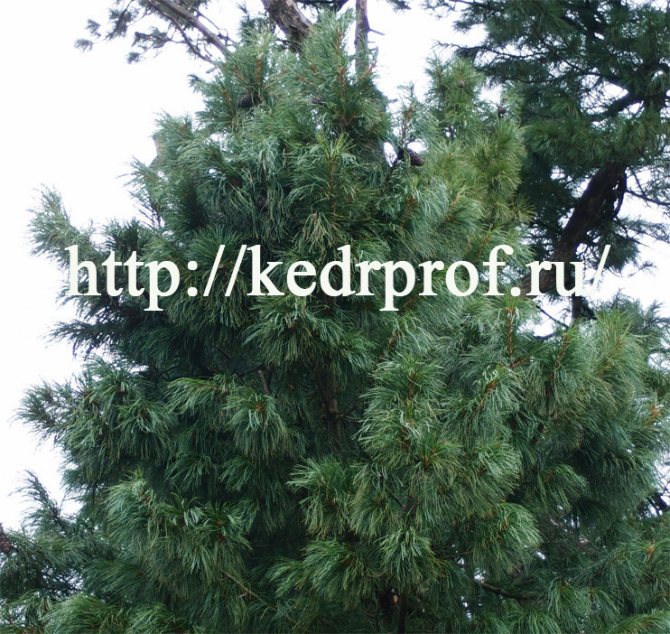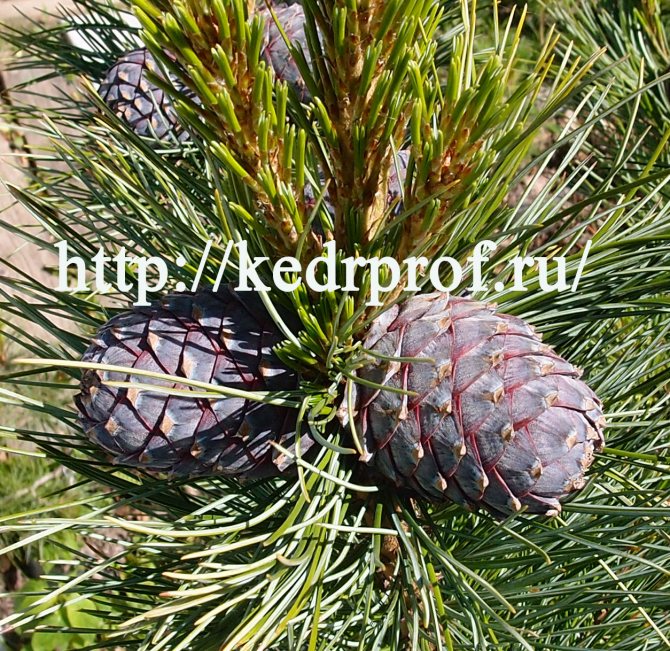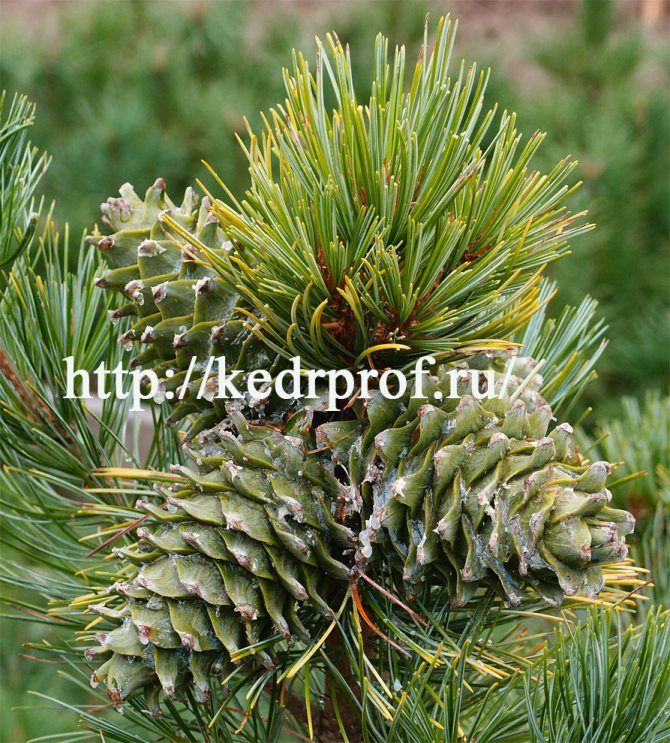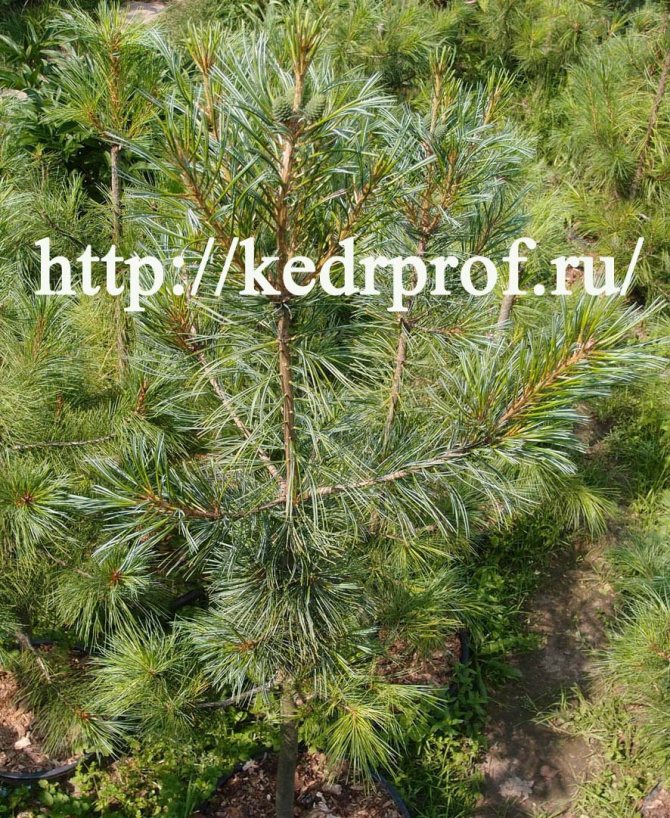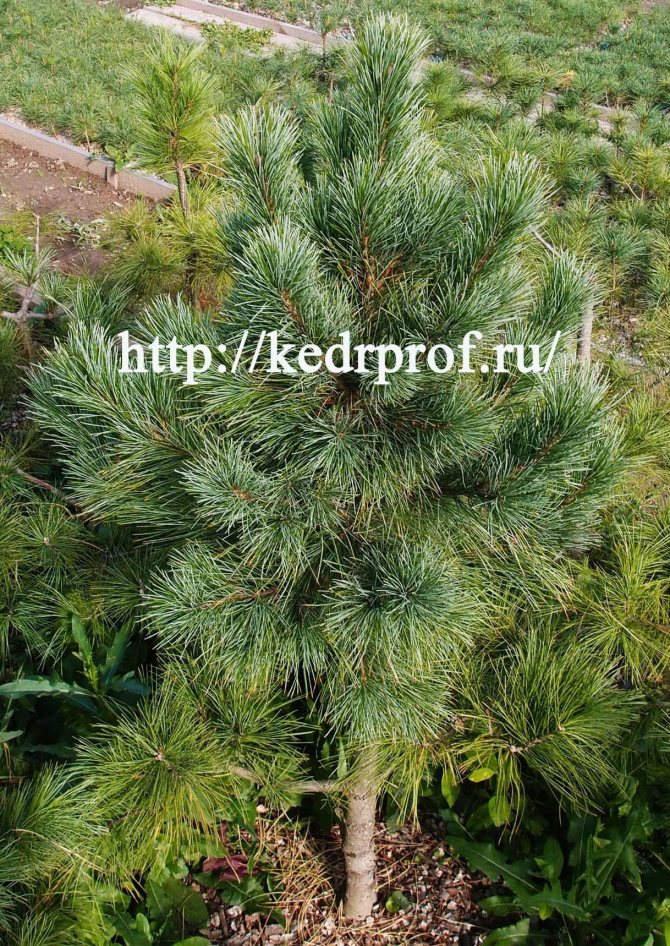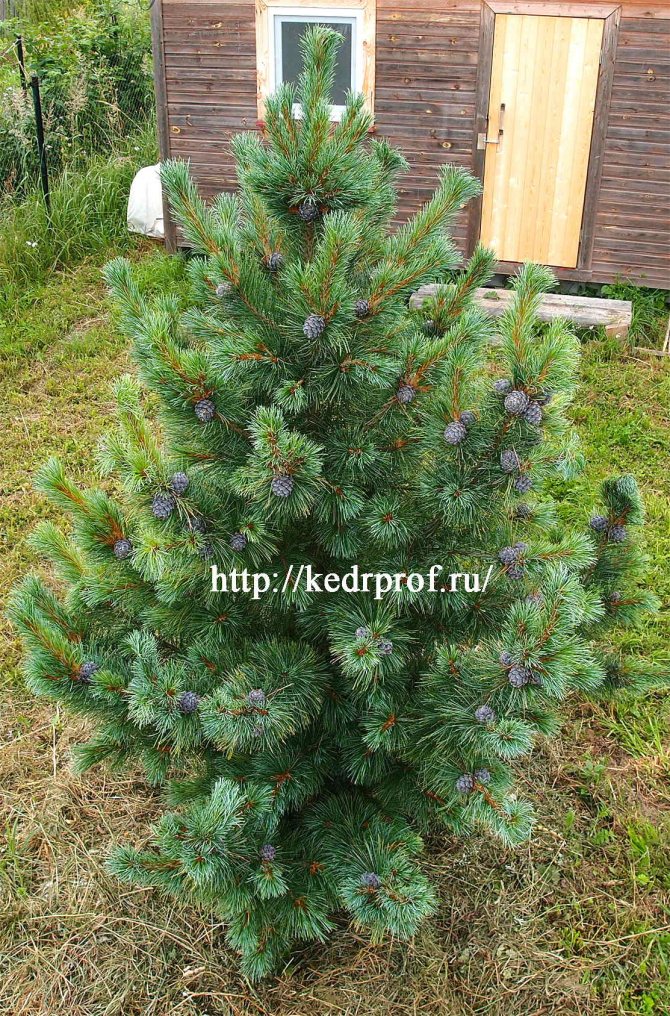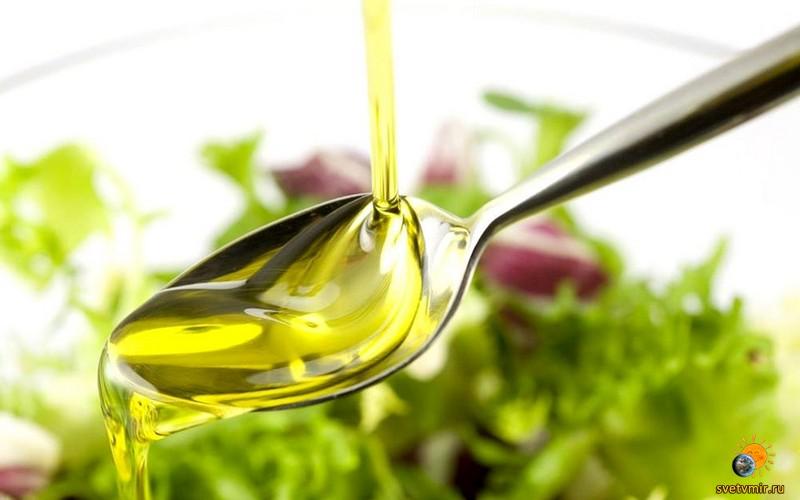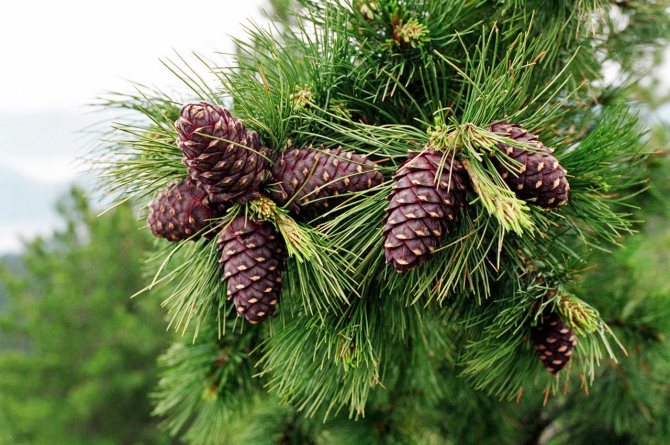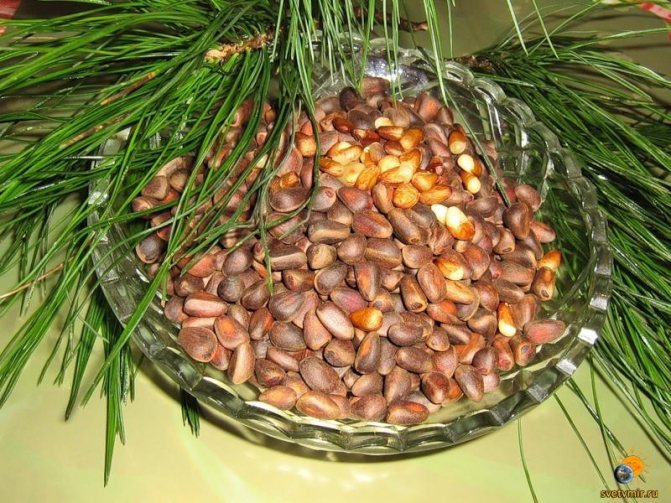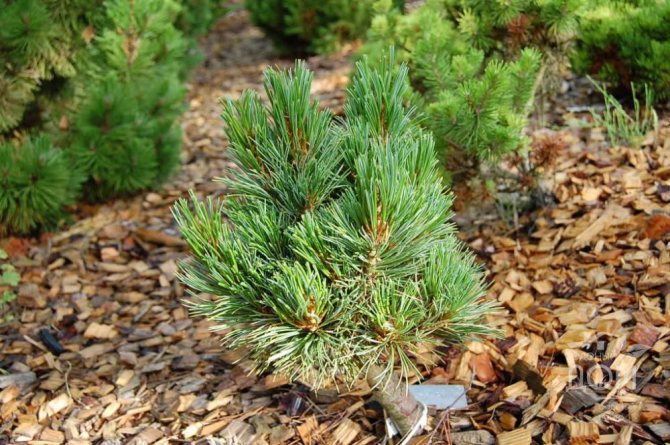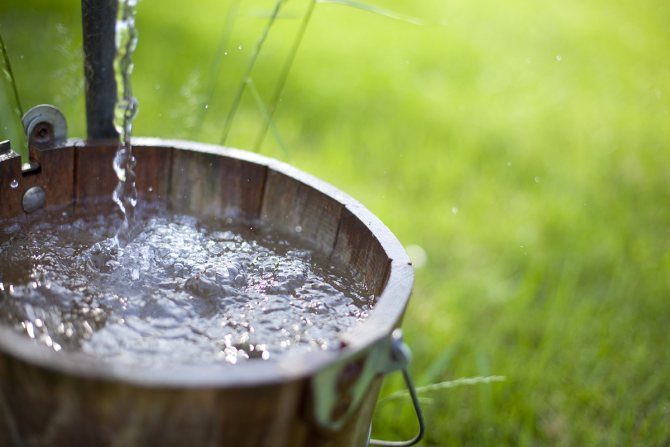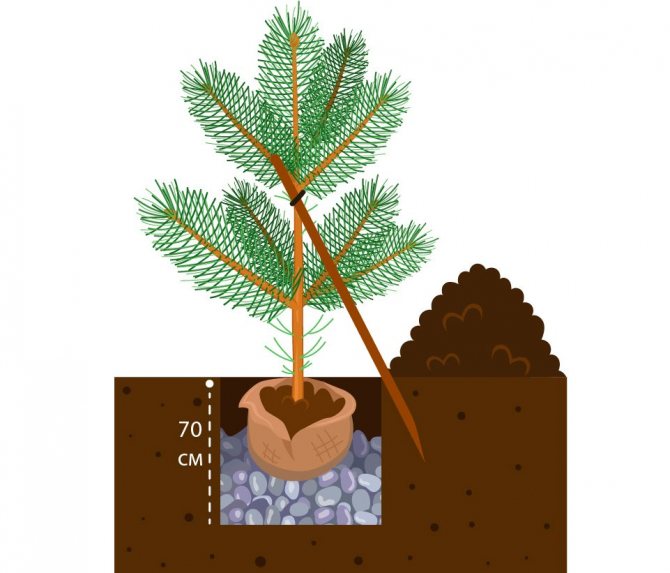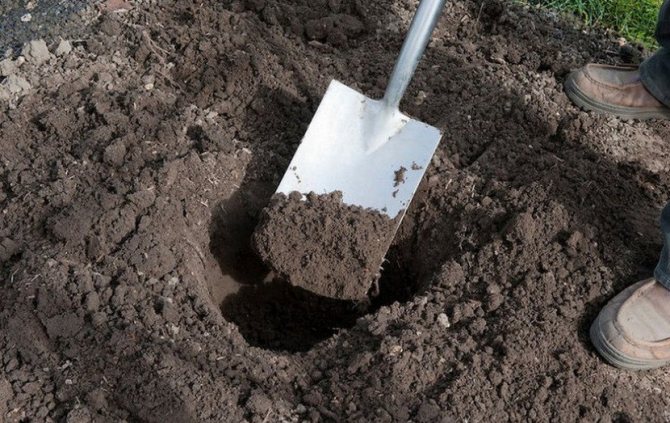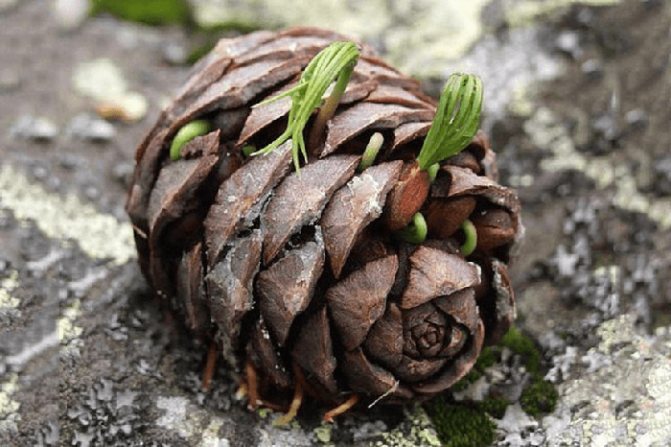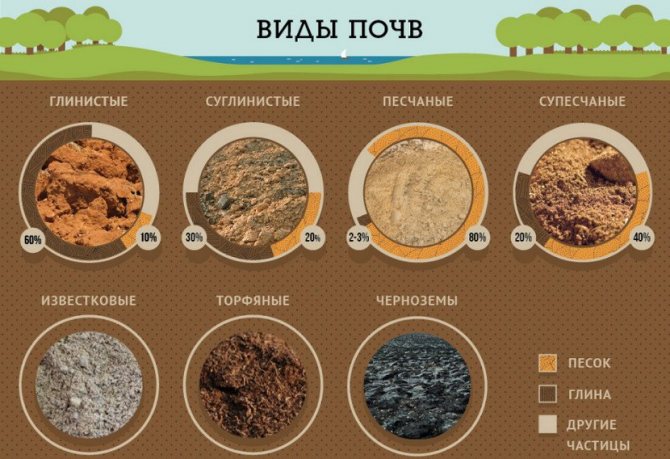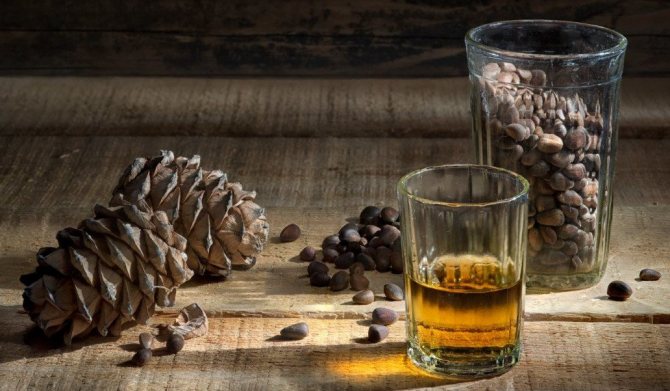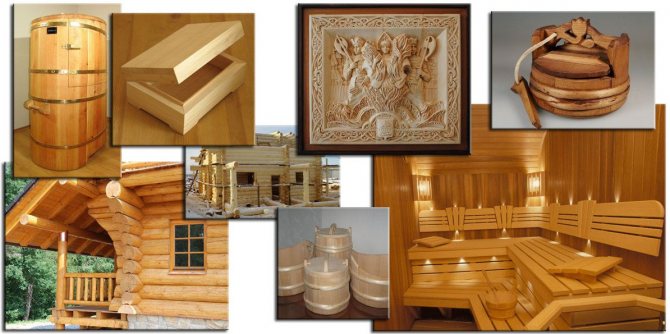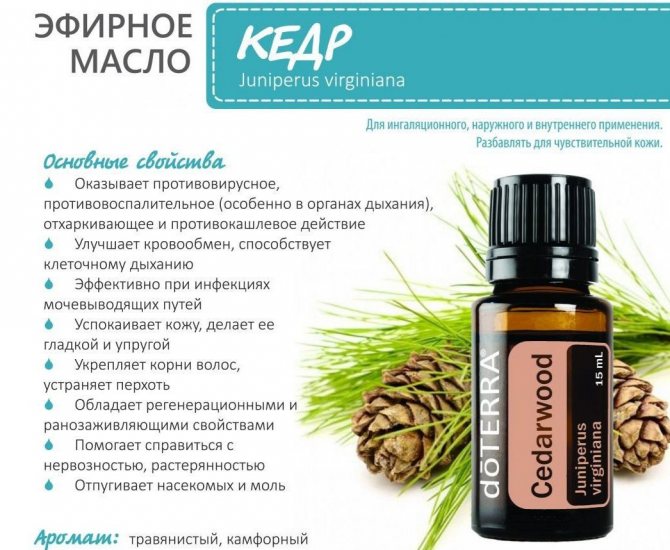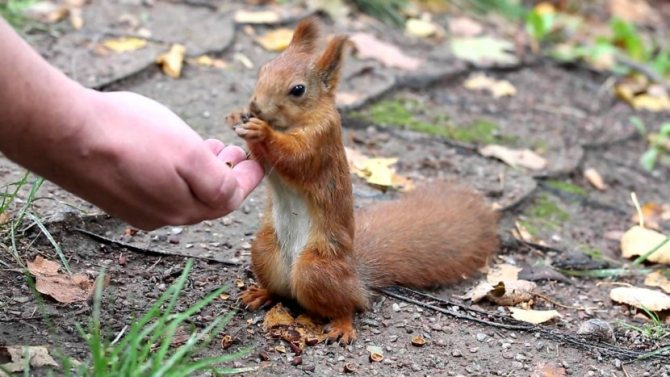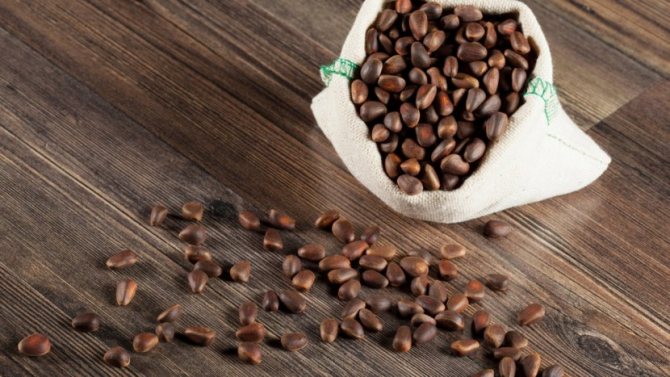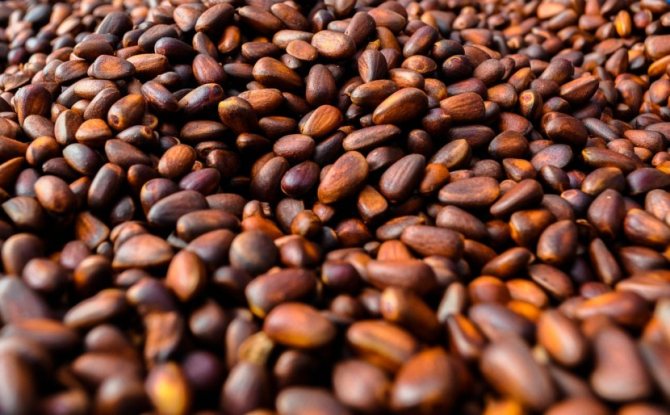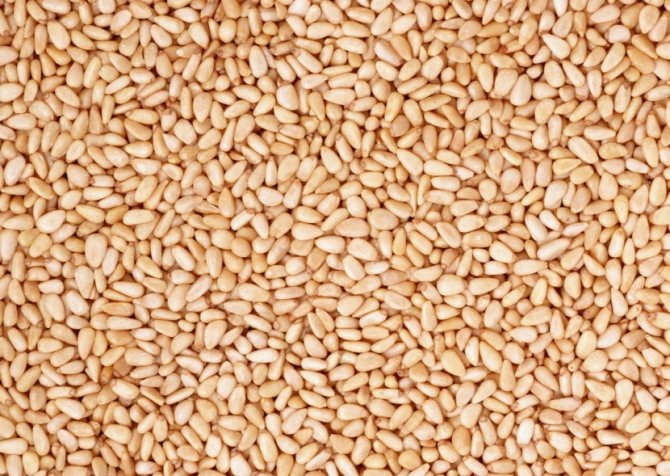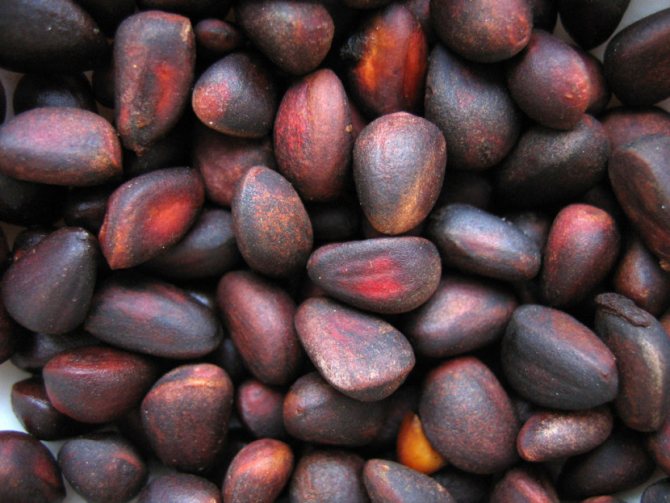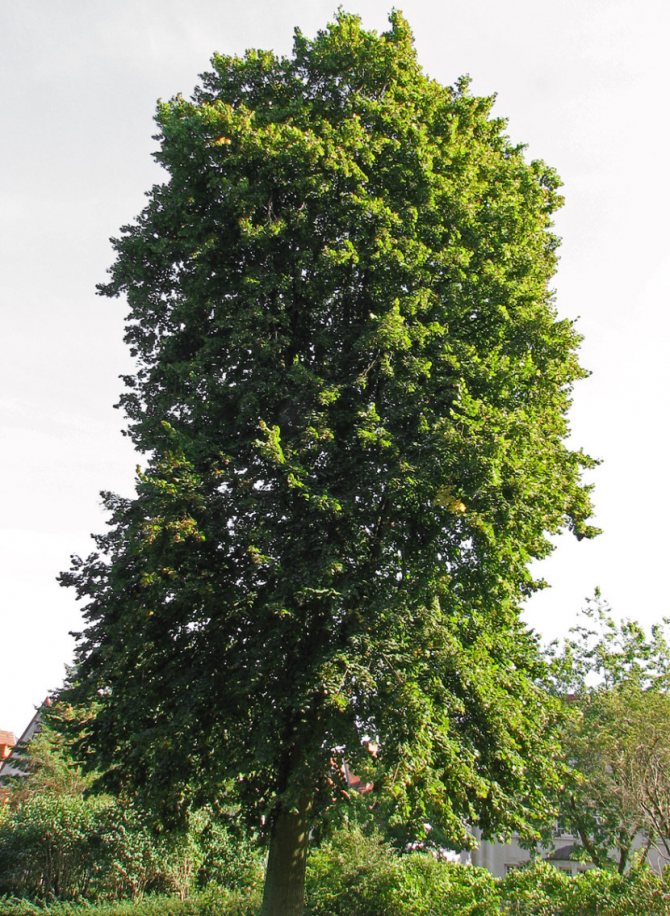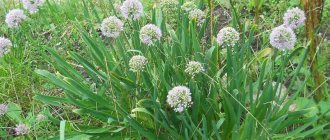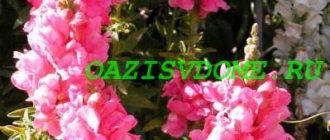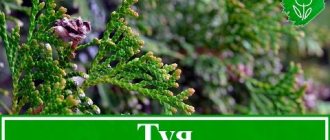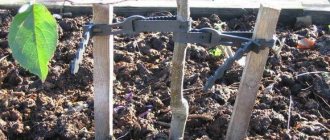Cedar (lat.Cedrus) - a genus of coniferous evergreen trees of the Pine family (Coniferae). It has a spreading pyramidal or umbrella-shaped (in old trees) crown and a slender trunk with dark gray cracking scaly bark. The root system of the cedar is shallow, so it is prone to windblows.
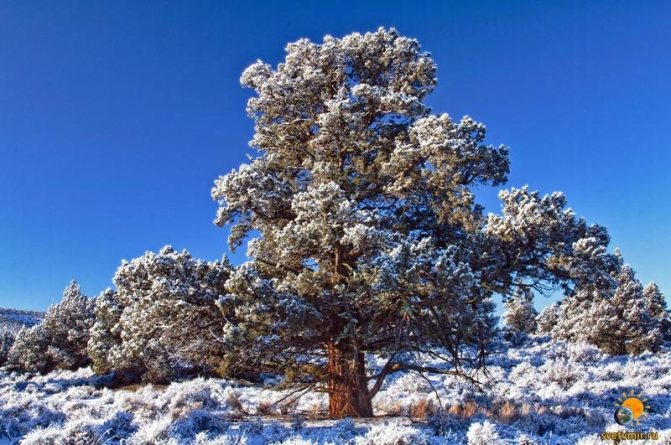
Siberian cedar can reach 35-50 meters in height and 2 meters in trunk diameter. The maximum life span is 800-850 years.
Siberian cedar is distinguished by a dense, often multi-peaked crown with thick branches. The trunk is brown-gray, in old trees it forms a fissured scaly bark. Branching is whorled. The shoots of the last year are brown, covered with long red hairs.
The needles are dark green with a bluish bloom, 6-14 centimeters long, soft, triangular in cross-section, slightly serrated, growing in bunches, five needles per bunch.
The root system consists of a short taproot from which lateral roots extend. The latter end with small root hairs, at the ends of which mycorrhiza develops. On well-drained, especially light-textured soils with a short taproot (up to 40-50 centimeters), cedar develops powerful anchor roots that penetrate to a depth of 2-3 meters. The anchor roots together with the basal feet ensure the stability of the powerful trunk and crown.
The growing season for cedar is very short (40-45 days a year). For this reason, it can be classified as a slow-growing breed. Another consequence is a straight, even trunk.
Siberian cedar is a monoecious, dioecious plant, that is, male and female cones are located on the same tree. The plant is anemophilic. Pollination takes place with the help of the wind. Male spikelets are collected at the base of the shoot (the growth of the current year), female cones are formed at the ends of the growth shoots, when the latter finish their growth, near the apical bud. Anther spikelets bear microsporophylls on their axis, which are larger at the base than at the apex. Covering scales are placed on the axis of the female cones. In their sinuses are seed scales with two ovules. The seed scales at the base of the cones are also larger than at the apex.
Cones are large, elongated, ovoid, first purple and then brown, 5-8 centimeters wide, up to 13 centimeters long. Cones ripen within 14-15 months. Each cone contains from 30 to 150 nuts (cedar seeds).
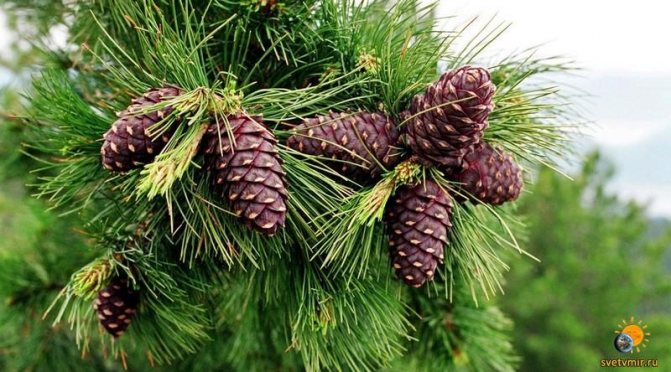

The seeds are large, without wings. Cedar begins to bear fruit after an average of 60 years, sometimes even later. From one tree, you can get up to 12 kilograms of pure walnut. The tree belongs to shade-tolerant species.
Cedar pine: description
Everything in this tree is unique and organic. Symbolizing beauty and strength, the cedar has occupied a special place in the soul of the Russian people since ancient times. The powerful ephedra grows up to 35 meters in height, often has a trunk diameter of up to one and a half meters, and individual specimens up to two. Cedar pine is a long-lived tree, the average life span of a tree is 400 years, some are able to live up to 800 years or more.
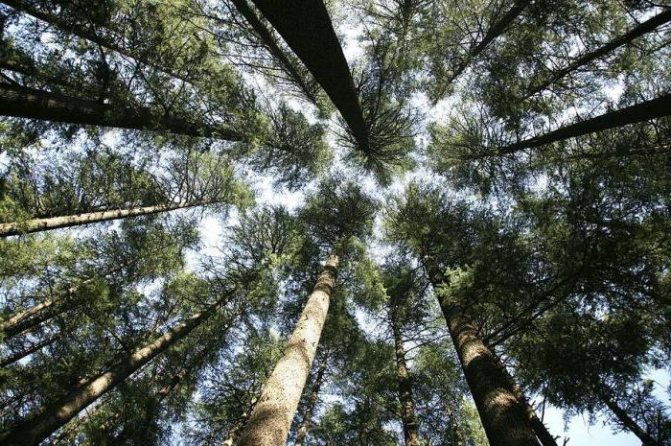

The branches of the tree form a compact, dense and beautiful crown. Hard and narrow needles up to 10-13 cm long are an effective medicine, so rich in unique vitamins and minerals.That is why the air in the cedar forests is sterile and healing: the released phytoncides create an invisible barrier, neutralizing harmful viruses and bacteria. The gamekeepers assure that the air in the cedar forest has the strongest healing effect: it heals the body and soul, improves well-being and soothes the nerves. A unique set of organic compounds in needles has long been used by a Russian person to treat scurvy manifestations, neuroses and increase immunity. Pine resin, sap, fully justifies its name, has a healing effect. And wood has excellent bactericidal properties.
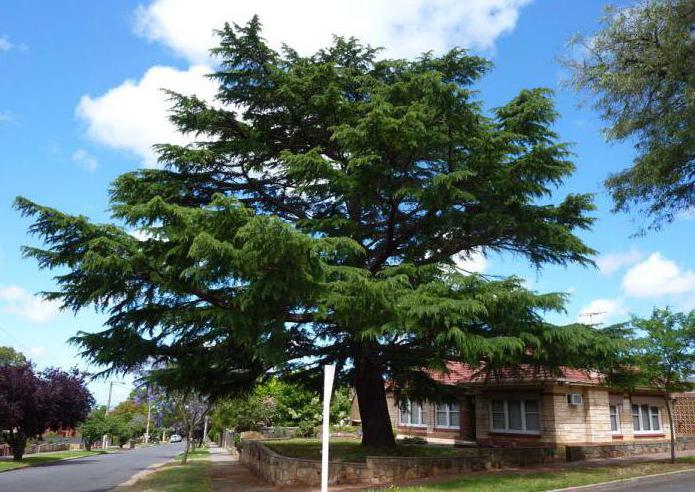

The fruits of the tree, pine nuts, are valued as an excellent delicacy, nutritious product and healing agent. For a long time in Russia, this tree was called bread, which is absolutely true, since at all times it saved and supported not only people, but also all forest animals.
Siberian cedar: photo and description of the tree
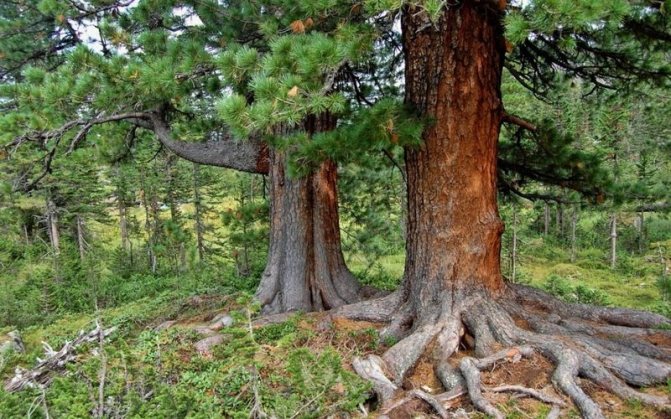

Siberian cedar in the photo
Siberian cedar - the most common and best studied. Its distribution area is extensive. Starting from the northeast of the European part to the southern slopes of the Urals, this species is an unshakable aborigine, growing both in the lowlands and on the mountains. In Central Altai, it grows at an altitude of 2300-2400 m above sea level.
The crown is conical from a young age, and then it becomes flat-topped. It can be either acute pyramidal or broadly spreading. It all depends on the place of growth. In groups, in the forest, with a small feeding area, cedars are elongated upward, and with a single planting they are spreading, have 2-3 peaks.
As you can see in the photo, the branching of the Siberian cedar is strictly whorled, tiered:
Annual shoots are yellowish with a rusty bloom, pubescent. The needles are triangular, up to 13 cm long, serrated along the edge and sits in 5 pieces in bunches on shortened shoots. The needles remain on the branches for 3-6 years.
The cedar blooms in the spring, right after the pine, and the cones ripen in the fall, the next year after flowering. They do not crack, they fall to the ground.
Pay attention to the cedar cones - in a mature tree they are very picturesque (light brown, elongated ovate, up to 13 cm long and 8 cm wide):
There are from 100 to 140 nuts in a cone - shiny, dark brown and very tasty.
The taste of nuts was appreciated by the inhabitants of the forest, cedar taiga. Nuts are the main food of the nutcracker bird, which often destroys up to half of the crop. From one tree, you can get up to 1500 cones.
But thanks to the nutcracker, the cedar also multiplies. The bird carries nuts over long distances, hiding them in moss, old stumps, forgets and loses. Nuts sprout, and thus the territory of cedar growth is expanding.
In addition to nutcrackers, nuts are eaten by wood grouses, hazel grouses, squirrels, chipmunks, and sables. The bear is also a hunter for tasty nuts in the taiga. He often climbs into the crown of a tree, breaks it, causing great harm.
To preserve the harvest, the locals knock unripe cones from the tree, shaking the crown with special punches. But there is also a predatory use of the cedar tree, when it is simply felled to remove cones.
Video: Collecting cones on a cedar
When describing the Siberian cedar, special attention should be paid to the chemical composition of its nuts - they explain the reason for such a high popularity of this tree. Pine nuts contain up to 61% fat, up to 17% protein, more than 12% starch. Pine nuts are rich in vitamin A (growth vitamin), B vitamins that improve heart function and are essential for the normal functioning of the nervous system. They contain especially a lot of vitamin E (tocopherol, which in Greek means "I bear offspring"). It is not for nothing that in years of good harvests of cedar, the fertility of sable and squirrels significantly increases.
It is known that pine nuts contain substances that improve blood composition, prevent tuberculosis, anemia.
From a kilogram of nuts, you can get up to 150 g of oil and 200 g of oil cake for feeding pets.
Cedar nut oil is one of the highest quality. It belongs to fatty drying oils. Light yellow in color and pleasant taste, the oil is in demand not only in the food industry, but also in the paint and varnish industry, in perfumery, medicine, and canning.
Nut milk and cream are made from nuts, which are high in calories.
Siberian cedar needles have essential oils, resins and vitamin C. It contains a lot of calcium, potassium, phosphorus, manganese, iron, copper, cobalt. When growing cedars are cut, cedar resin is obtained, containing up to 19% turpentine.
The gum has embalming properties. In folk medicine, it is used to treat purulent wounds, cuts, and burns.
In relation to light, Siberian cedar is shade-tolerant, especially in youth, when growth is slowed down. Despite the fact that it is a close relative of the light-loving pine, light is not decisive for an adult tree either.
Spread
In Russia, cedar pine is widespread throughout Siberia and forms natural plantations. The tree can grow well in almost all temperate latitudes, and gardeners have long been engaged in cedar cultivation in many regions: in the Moscow region, the Leningrad region, central Russia, in the Urals, Altai and even beyond the Arctic Circle. Cultivated and well-fed cedars, planted in fertile soils, begin to yield crops two to three times faster than in natural conditions. Usually, in forests, cedar pine begins to bear fruit fully when it reaches the age of 40-50 years, with a repetition of harvest periods every 5-8 years, and in garden plots - after 15-20 years from the moment of planting, yielding a crop every 2-3 years.
Growing recommendations
Growing a cedar is a rather troublesome business. Therefore, for novice gardeners, you can use the following recommendations:
- In late autumn, they must carry out the mulching procedure, because it helps to preserve heat in the rhizome, and also stimulates the growth of adventitious roots.
- In the dry period, it is necessary to irrigate the crown of a young cedar 1-2 times a month. This procedure will remove dust from the tree and help improve gas exchange in the stomata of the needles.
- The soil near this plant is loosened only on the surface. Deep digging of the site is not permissible, because the roots of the tree are close to the surface of the earth.
- You cannot trim the side shoots of a cedar, because the more needles it has, the faster it develops.
- Despite the fact that the cedar is a self-pollinating plant, it is recommended to plant several more varieties near it for better yields.
- When growing a cedar garden, the spacing between trees up to 8 m should be observed.
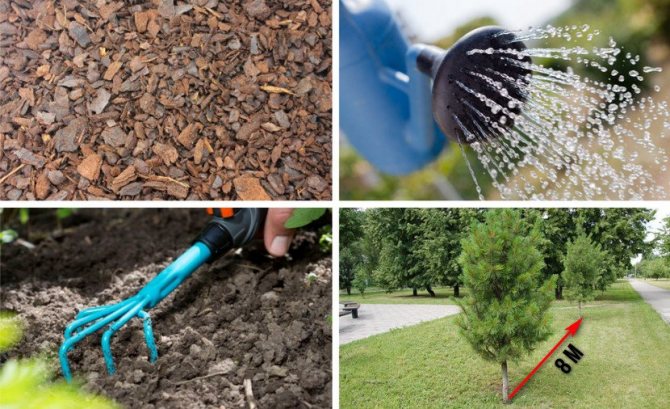

Siberian cedar is a beautiful and useful plant, which is famous for its delicious fruits and the ability to release phytoncides into the air, cleansing it of pathogenic bacteria. Planting him is quite a difficult task. Therefore, before cultivating it in the garden area, you should carefully familiarize yourself with the botanical features of the tree and the rules for caring for it.
Cedar pine: growing
There are various methods of reproduction - vegetatively, by seed or by grafting. The seed of the cedar pine is a nut. Undoubtedly, it is better that they are of high quality (tested for germination) and varietal.
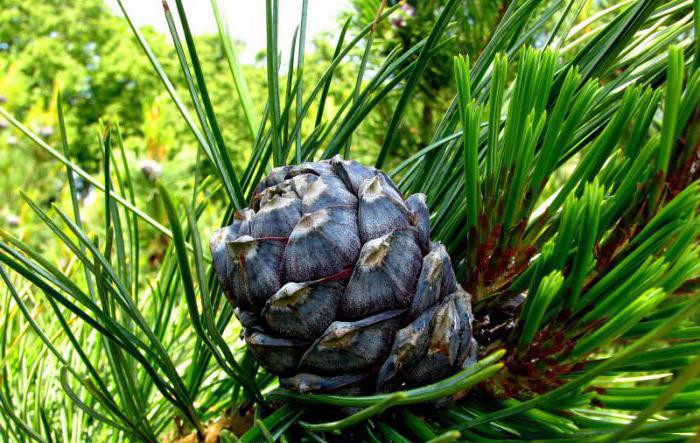

But you can also use seeds from store-bought buds. In this case, you will just need to increase their number for landing, since not all of them can ascend. The best time for sowing pine is April - early May. It should be remembered that seed germination depends on the pre-planting preparation, and stratification is required for conifers - forced cooling, which stimulates the activity of the embryo.Without such an operation, the seeds will sprout only a year after planting, if they survive, do not rot or become prey for rodents.
Diseases and pests
Parasitic insects
Unfortunately, the mighty Cedar is susceptible to attack by harmful insects such as:
- Bark beetle. Especially dangerous for young Cedars. With the onset of spring days, beetles determine the weakened pine by smell and begin to gnaw its bark, forming holes and passages in it, in which females lay eggs, which eventually turn into larvae. There are so many pests that they can penetrate almost to the middle of the tree and then it will be impossible to save it. The presence of a beetle can be indicated by small holes in the bark with resin escaping from them. If insects are present in small numbers, special preparations are used to combat them, and the affected bark is removed.
- Siberian Hermes. This pest parasitizes both young seedlings and adult trees, piercing the bark of pines and feeding on their sap. Because of this, the growth of Cedar can stop, and the stem coating takes on a painful appearance. Signs of the presence of the parasite are outgrowths of fluff on the needles, trunk and branches. They protect Hermes from external influences and therefore it is very difficult to get rid of it. Therefore, to combat insects, chemicals are used that poison the juice of the Cedar.
Siberian pine diseases
The following diseases can affect the cedar tree:
- Needle rust. The disease most often manifests itself in the warm season, with prolonged exposure to humid air. A yellow-orange bloom appears on the needles in the form of bubbles, which after a certain time are converted into powder, which is a fungus that infects coniferous needles. As a result, the needles become covered with dark red spots, begin to die off and crumble. Most often, the fungus appears due to the presence of high humidity in the air. It is very difficult to get rid of it; at the initial stage of the disease, cleansing the tree from infected areas can help.
- Shoot cancer. This fungal disease is virtually untreatable. Shoot cancer greatly weakens the immune system of the Cedar, deforms the bark, which subsequently crumbles and the tree dies. Treatment with special drugs can help only at the first signs of the manifestation of the disease.
To prevent diseases in cedar pine, you need to properly care for it, timely identify possible pathologies and, if necessary, use medications, after consulting with specialists in the cultivation of coniferous trees.
Siberian cedar pine
How to stratify?
So, the planting of cedar pine is accompanied by stratification, which takes at least 3 months. 90 days before planting, the seeds are pickled by placing them in a weak solution of manganese for 2 hours. This will protect them from disease. Then the seeds are soaked: they are poured over with hot water (40-50˚С) and, maintaining a constant temperature, they are left for three days. After that, the nuts are mixed with a threefold volume of well-moistened clean river sand or fine peat crumbs. It is important not to overmoisten the filler: it should hold its shape when squeezed in the hand without water appearing.
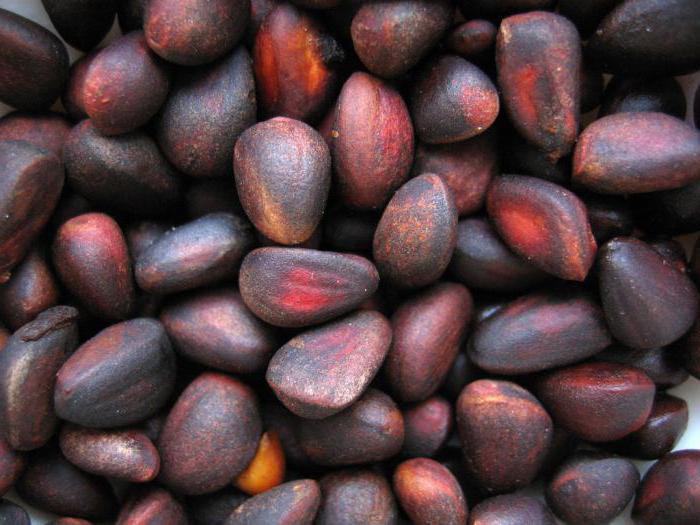

This mixture is poured into a layer of 10-20 cm in a plywood box with ventilation holes, which is placed on wooden blocks to provide air access. The container is placed in a refrigerator, basement or other cool room, where a constant air temperature is maintained within the range of 4-6 ˚С. Once every 2 weeks, the mixture is thoroughly mixed and moistened, replenishing the loss of moisture to its original state. Lowering the temperature to minus should not be allowed, since it threatens damage to the seed. The main indicator of correct stratification is the hatching of most of the seeds by the time of planting. Now the gardener is approaching the next stage in the propagation of a plant such as cedar pine.Planting and caring for young trees is not difficult, but will require attention.
Cedar cone in food
Cedar nuts are widely used in the food industry. Cream, butter and milk are made from cedar fruits, which have a fairly high calorie content.
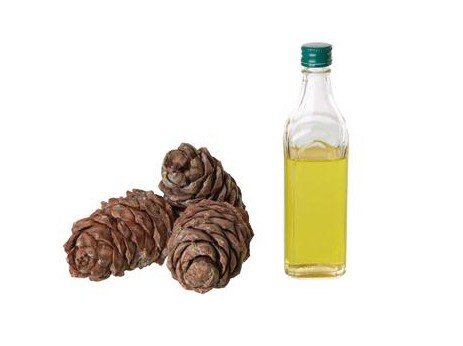

At the factories of Siberia, table oil with excellent taste is obtained using cold pressing, and technical oil - by hot pressing. The cake remaining after production is used to make halva. As a result of grinding nuts (very thinly) with water, milk is obtained. Cream is obtained in the same way, but with less water.
Sowing
The optimal soil for growing cedar is loose, sufficiently moist and breathable sandy loam or loam. The seeds are buried by 2-3 cm, and the crops are mulched with sawdust, humus or peat. This will protect the soil from drying out, crusting after watering or rain, and weeds.
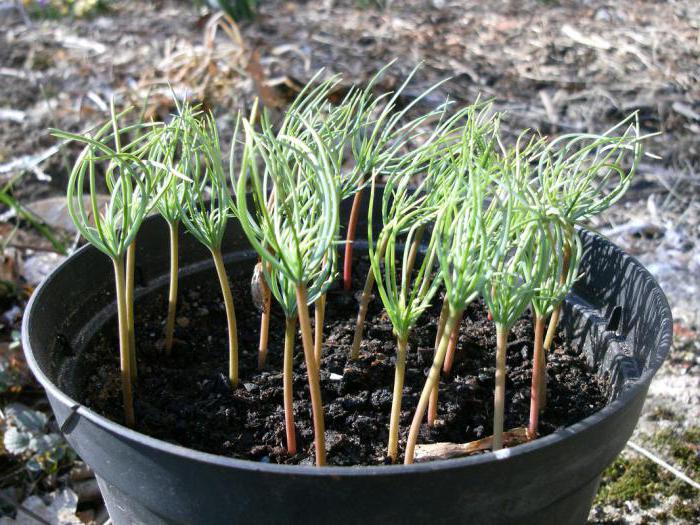

When shoots appear, protection from birds pecking at the remains of nuts, which pull the first tender shoots out of the ground, will be required. Usually, the crops are covered with shields of intertwined willow twigs, raising them above the plantings to a height of 6-8 cm. They are harvested in about a month, when the seedlings get stronger and the birds will no longer be afraid of them.
Cedar cone: photo, composition and properties
The taste of nuts and their nutritional properties are best preserved in their own "packages" - cones.
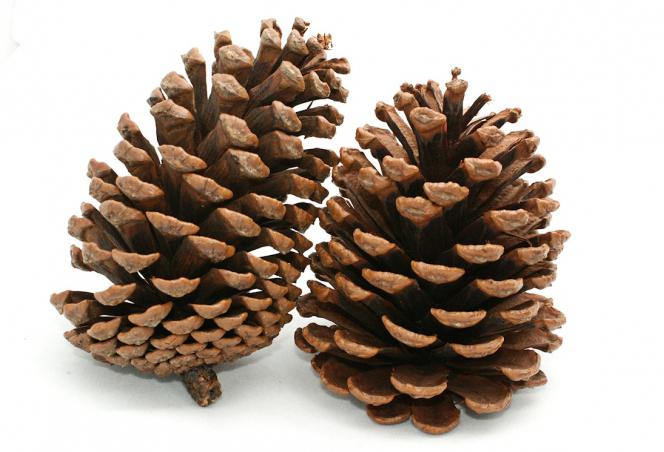

The benefits of using nuts in food are immeasurable. Only 100 grams of nuclei replenish the daily requirement of the human body for amino acids. Nuts also contain vitamins A, B (1, 2 and 3), D, E and a huge amount of trace elements: iron, magnesium, iodine, manganese, calcium, potassium, phosphorus, silicon, copper, boron, titanium, nickel, sodium, aluminum , silver and molybdenum.
Of the organic acids, citric acid is present in the composition of nuts. Also, nuts contain proteins, starch, fiber, a little sugar (sucrose).
The kernel of a nut is an excellent source of fat.
Transfer
Dig up a small cedar carefully, trying to preserve the roots. If possible, the seedling is removed from the garden along with an earthen lump. Air drying after the plant has been dug out is also unacceptable. The root ball must be moistened with water and planted.
The planting site must be prepared in advance, the soil is dug up with humus and weeds are removed. There are peculiarities in the planting scheme: in order to achieve cross-pollination, seedlings are planted in a group of 3-4 trees with an interval of 5-7 meters between them. Lupine grown between them stimulates good growth of young plants.
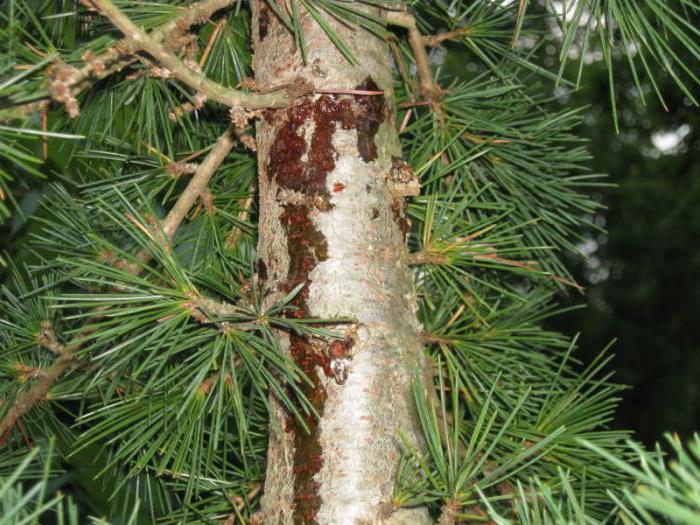

The plantings must be watered generously around the circumference of the crown, they do not forget to fertilize the trees, adding phosphorus-potassium fertilizers before winter, and organic matter in the spring.
Choosing a landing site
Having chosen the right Siberian cedar seedlings, you need to take a responsible approach to choosing a place for planting. This tree has been growing for more than a dozen years, which means that we need to think about creating favorable conditions for the successful cultivation of this plant.
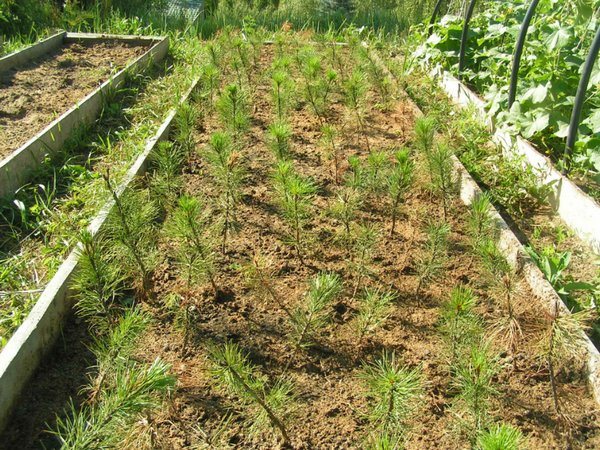

Lighting
The tree should be planted in a well-lit area. Although young growth tolerates partial shade well, Siberian cedar is sensitive to air pollution, this should also be taken into account when planting.
Important! Pine nuts should be eaten with caution by people prone to allergies.
The soil
Grows well in sandy loam and loamy wet areas. However, if your site has clay and loamy soil, then additional soil drainage is needed. In case of increased acidity of the soil, lime will help. It is necessary to throw 300 g of lime into the hole and mix with the soil. This will help make the soil more neutral.
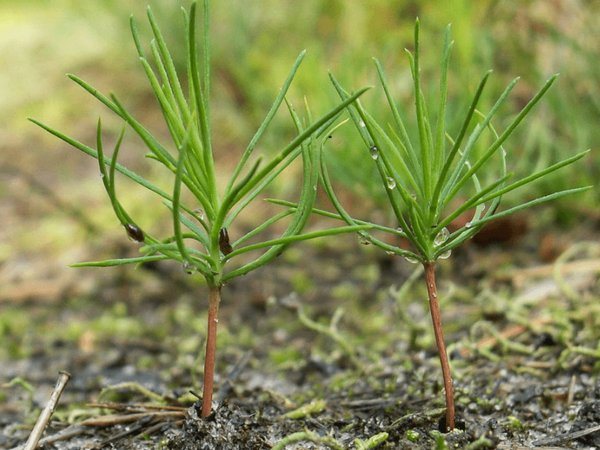

Problems
Diseases of cedar pine are caused by some types of fungi that live in the soil. Their damage to the roots of young trees often leads to the death of plants.Anamorphic fungi belonging to the group of soil pathogens are the cause of tracheomycotic wilting, which manifests itself as follows: the roots become brown, and the mycelium of the fungus, penetrating into the vascular system of the tree, clogs it and blocks access to food. As a result, the needles turn red and fall off, the plant dries out quickly.
Fungal diseases are difficult, almost impossible to cure. Only preventive measures aimed at suppressing the multiplication of fungi can be effective. To prevent the spread of such diseases, planting material should be carefully selected, and rooted plants should be timely treated with fungicide preparations or copper-containing compositions. Affected trees and fallen needles must be removed from the site. In the initial stages of a fungal disease, stem injections under the bark are effective, but the onset of the pathological process is very difficult to determine.
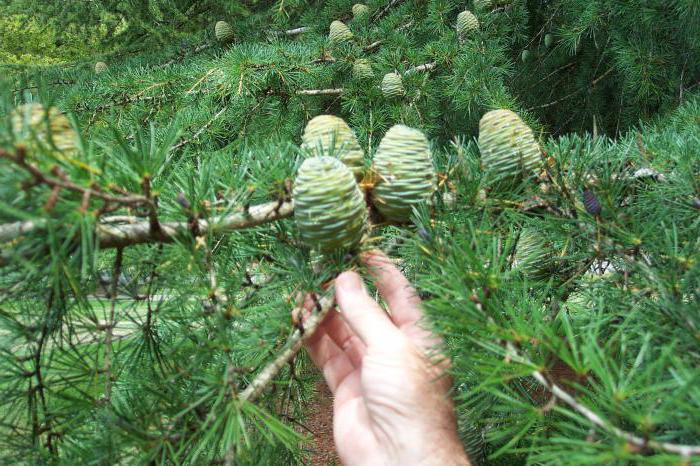

Another scourge of a culture like cedar pine is cone rust, which is also caused by soil fungi. The symptoms of this disease are as follows: the tips of the shoot die off, the trunk is curved, and the cones open and dry out. The danger of this disease is that it spreads rapidly among young trees and can negate the work of the nursery. Therefore, preventive measures are necessary: the treatment of young animals with fungicides is required. If necessary, in advanced cases, cutting of affected trees is used.
Landing in open ground
You can get a cedar pine on your site in two ways: by sowing a nut or by planting a seedling. Both methods have the right to life; they have their own strengths and weaknesses.
Ephedra seeds are inexpensive (5-15 rubles apiece), they can be sent by mail to anywhere in the country. The seeds can be stored in a dry place for a while, until a convenient time for sowing comes. Cons of seed propagation of cedar:
- the need for stratification (cold treatment);
- low germination (no more than 50%);
- mice love to eat nuts;
- cedar seedlings are small and tender, they need careful care.
Cedar pine seedlings are much more expensive (from 500 rubles for a 2-3-year-old bush). But the survival rate of the plant, subject to correct planting, is close to 100%.
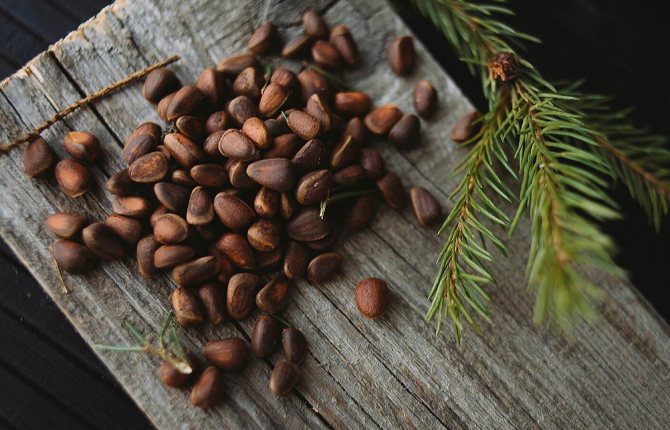

The seeds can be stored in a dry place for a while, until a convenient time for sowing comes.
Optimal time
The ideal time for planting cedar pine at their summer cottage is late autumn. In the climate of the middle zone - the end of October. At this time, the plant is ready to plunge into a dormant state and easily tolerates a transplant. The lack of heat also has a beneficial effect on the adaptation of the seedling in a new place.
Cedar is not afraid of frost. Surface freezing of the soil does not prevent the plant from rooting. The main thing is that the soil is not frozen during planting.
Planting is also possible in early spring, in April. But in this case, you will have to shade the young plant from the bright spring sun so that the needles do not get burned. It is useful to spray the crown of a cedar pine with cool water if the heat comes.
Attention! The culture is sown with nuts in November, on a previously prepared garden bed in the open field. Natural stratification allows you to get friendly and strong plant shoots.
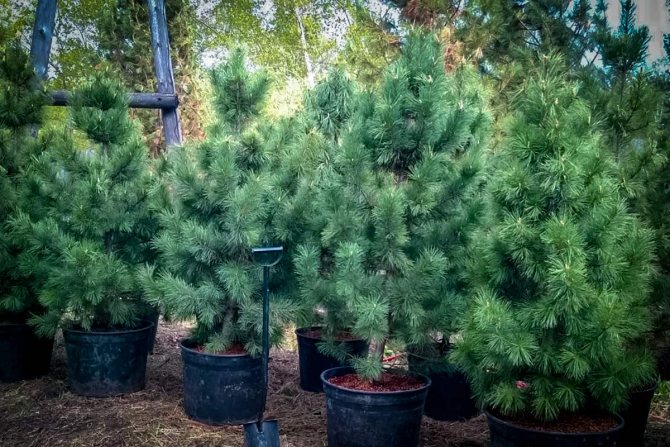

The ideal time for planting cedar pine at their summer cottage is late autumn.
Site selection and soil preparation
Before deciding to plant such a large-sized tree like a cedar, you need to choose a suitable place for it. The fact is that the cedar does not like transplants. The older he gets, the more difficult it is for him to settle down in a new place.
An adult cedar pine should not grow closer than 6–8 m from other trees and buildings. Otherwise, the roots of the krupnomer will destroy the foundation or strangle neighboring plants.
Important! It is necessary to make sure that no wires are stretched over the location of the seedling and no gas pipes pass.
At an early age, the seedling needs a lace shade. Delicate needles in the bright sun turn red and dry.The first 3 years are protected from the sun and wind with wicker shields or caps made of white lutrasil.
Cedar requires dry and elevated areas for planting. In ravines, in places where melt and rainwater accumulate, it will not grow.
The culture makes the following requirements to the composition of the soil:
- acidity at the level of 6-7.5 units;
- loose;
- moisture-absorbing;
- fertile.
Fertile loams are considered ideal in composition. Peat and humus, sod soil are added to the sandy loam. Dense clay soil is loosened by adding sand - up to 8 kg per 1 sq. m.
Important! It is useful to add half a bucket of coniferous litter to the planting hole along with the top layer of soil. In such a substrate, microorganisms necessary for coniferous plants are present, which help the plant to assimilate nutrients. Litter and soil are taken only from under healthy trees.
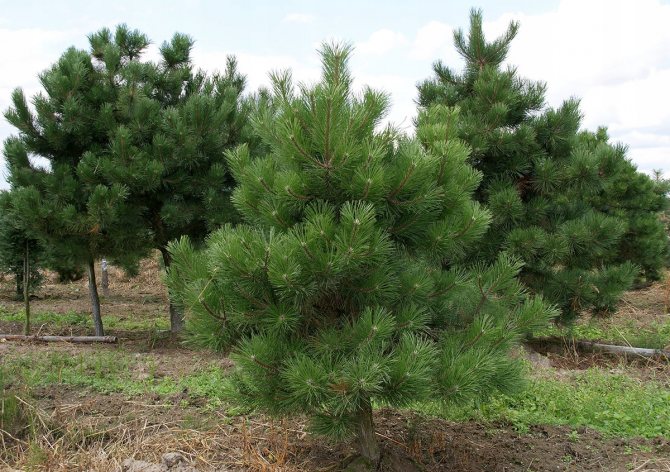

An adult cedar pine should not grow closer than 6–8 m from other trees and buildings.
Landing scheme
The planting hole is dug 60 cm deep; its diameter depends on the size of the root system. The roots of the cedar lie in the top layer of the soil and grow in breadth, so there is no need to dig a hole deeply. The distance from the cedar pine to the nearest large tree is at least 6 m.
At the bottom of the hole, half a bucket of expanded clay or crushed stone is poured - this is drainage. The pit is half filled with fertile soil with coniferous litter, to which mineral fertilizer for conifers has been added ("Buyskoye", "Fertika").
The seedling, previously soaked in a solution of "Kornevin" and "Heteroauxin", is removed from the pot. The roots must be untangled and straightened, the success of cedar rooting depends on this.
The seedling is immersed in a hole without deepening the root collar. The roots are spread to the sides and covered with earth, pressing it tightly.
After planting, the cedar is watered, spending up to 5 buckets of water for each plant. The surface of the soil around the seedling is mulched with peat and needles. If the planting was carried out in the spring, a shelter from the sun is erected for the plants.
Nuts are sown at a distance of 5-10 cm from each other, to a depth of 1.5-2 cm.
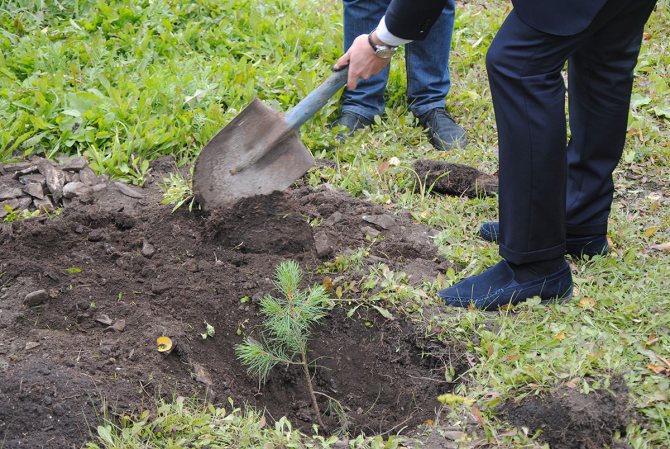

The planting hole is dug 60 cm deep; its diameter depends on the size of the root system.
Crown formation
In cultural plantings, a crown is formed from a cedar seedling from an early age. The garden form is considered the most effective: spreading and multi-peaked, since a feature of the plant is the laying of flower buds in the upper part of the shoots. During the first 10-15 years, the lower branches of the cedar are cut to a height of 2-2.5 m from the ground with a pruner at the level of the trunk. Sections are treated with garden pitch. All pruning operations are carried out during the rest period (winter or early spring), before awakening.
The cedar pine, the photo of which is presented in the article, is one of the crops worthy of special breeding. These are the features of growing an interesting useful and decorative tree.
Description of Korean cedar and its photo
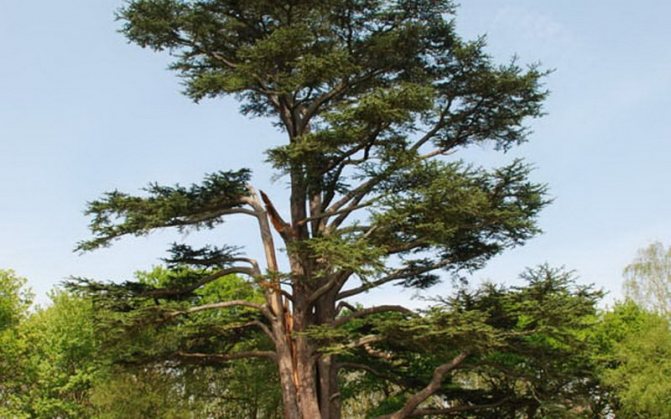

Korean cedar in the photo
Korean cedar is the most majestic tree. The beauty of the description of the Korean cedar is not inferior to any of the known species. This tree reaches 45 m in height and 2 m in diameter with a wide-conical and multi-peaked crown.
Young shoots with dense rusty pubescence. The needles are bluish-green, up to 20 cm in length. On the edge, it is finely toothed, rough, not similar to the needles of other species. She keeps on shoots only 2 years.
The male spikelets of the Korean cedar are yellow, and the female cones are first reddish, then purple. Blooms in June.
Pay attention to the photo - the Korean cedar has ripe cylindrical cones, 10-15 cm in length, larger than the Siberian species.
Ripen in the second year after flowering. They fall to the ground without opening in November.
The seeds are twice as large as those of Siberian cedar, and contain more fat - up to 65%.
Fruiting from 40-50 years of age to a ripe old age in 1-2 years. But the number of cones on the tree is much less than that of the Siberian cedar.Seed germination lasts only a year, although it is 85%. They must be sown in the fall. Seedlings appear the next year in early spring. They have 10-14 juicy cotyledons.
By the taste of nuts, needles - by the content of vitamin C and wood - by the technical properties it is not inferior to the Siberian cedar.
It is difficult to include low, creeping species in the family of tall, mighty cedars; nevertheless, they exist.
The healing properties of Korean pine
In the kernels of this pine, in addition to those previously listed, there are the following properties: fiber that stimulates digestion, vitamins B, D, F. Milk obtained from cedar nuts is used in folk medicine, in the treatment of various diseases. They are widely used in homeopathy, treatment of lung diseases, as well as for renal failure and bladder disease.
For men, this fruit has almost magical properties. Pine nuts increase immunity and increase life expectancy.
For bronchitis, asthma and other pulmonary diseases, a special tincture is made. To do this, you need: crushed nuts, together with the shells, pour into a bottle with a volume of 0.5 liters, then pour everything with vodka. Let it brew for two weeks in a dark, warm place. As a result, the tincture gets a dark brown hue, after which everything is drained, filtered. It should be taken in a tablespoon half an hour before meals 3 times a day.
Young shoots, needles and buds of Korean pine are a good anti-scaling agent. They contain 250 - 350 mg. vitamin C. An infusion of vitamins should be done in this way: grind the components, add water, add lemon juice there and put in a warm place for 3 days. Further, pour out the filtered precipitate, and the infusion can be drunk. In addition, pine needles are used both in medicine and in perfumery. It contains about 2% essential oils.
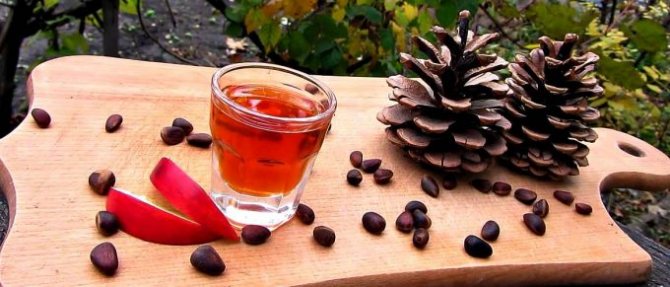

Botanical description [edit | edit code]
Siberian cedar is an evergreen tree 20-25 (40) m tall. Differs in a dense, often multi-peaked crown with thick branches. The trunk is straight, even brown-gray; in old trees it forms a fissured scaly bark. Branching is whorled. The shoots of the last year are brown, covered with long red hairs.
The needles on shortened shoots are dark green with a bluish bloom, 6-14 cm long, soft, triangular in section, slightly serrated, growing in bunches, five needles per bunch.
The root system consists of a short taproot from which lateral roots extend. The latter end with small root hairs, at the ends of which mycorrhiza develops. On well-drained, especially light-textured soils with a short taproot (up to 40-50 cm), the tree develops powerful anchor roots that penetrate to a depth of 2-3 m. The anchor roots, together with the basal feet, ensure the stability of the trunk and crown.
The growing season is very short (40-45 days a year). For this reason, Siberian pine is classified as a slow-growing species. The tree is shade-tolerant.
Siberian cedar is a monoecious, dioecious plant, that is, male and female cones are located on the same tree. The plant is anemophilic: pollination occurs with the help of the wind. Male cones (microstrobili) are collected at the base of elongated shoots (growth of the current year), female (megastrobilis) are formed at the ends of growth shoots, when the latter finish their growth, near the apical bud. Buds are conical, gradually tapering, 6-10 mm in length, not resinous; renal scales are long and gradually pointed, lanceolate. The anther strobili bear microsporophylls on their axis, which are larger at the base than at the apex. Covering scales are placed on the axis of the female cones. In their sinuses are seed scales with two ovules. The seed scales at the base of the cones are also larger than at the apex. Dusts in June.
Mature cones are large, elongated, ovoid, first purple and then brown, 5-8 cm wide, up to 13 cm long; their scales are dense, appressed, on the surface covered with short stiff hairs. The scutes are thickened, broadly rhomboid, large, up to 2 cm wide, with a small white navel. Cones ripen within 14-15 months and fall off in September next year. The cones fall off entirely without opening. Each cone contains from 30 to 150 seeds - pine nuts. Seeds are large, 10-14 mm long and 6-10 mm wide, oblique ovate, dark brown, without wings. The mass of 1000 seeds is 250 grams. From one tree you can get up to 12 kg of "nuts" per season. Siberian cedar begins to bear fruit after an average of 60 years, sometimes even later. Abundant sperm is repeated after three to ten years [7].
Nutcracker and chipmunk play an important role in seed distribution.
Homeland of the cedar
According to archaeological data, cedar trees have been growing on Earth for more than one hundred years, therefore the exact history of the origin of the first such plant is not exactly known... Presumably, the place of appearance of different species is consonant with their name, which means that the Himalayan cedar (C. deodara) will be native to the Himalayan mountains, the Atlas cedar first grew on the rocky territory of northwestern Africa in the Atlas mountains, the Lebanese began to spread around the world from Lebanon, and Cypriot or short-coniferous cedar people first met on the island of Cyprus.
Important! Under the term "cedar" in the forestry and forestry literature, other conifers and lumber are often mentioned, but you need to know that "white cedar" (thuose cypress), "western red cedar" (giant thuja) and Siberian pine have nothing in common with plants of the same genus.
No less interesting is the history of the origin of the name "cedar"... According to one of the most common theories, the first Cedar is a European plant that grows during the existence of Ancient Rome in the territory of modern Italy. Having landed on the island of Crete, the Roman soldiers saw a tree growing there, very similar to those that are next to their homes - cedar pines. Later it became known that they are not entirely identical. In Russian history, there is no exact data on the origin of the name of the tree, but it is known that in Russia they grew on the territory of the eastern part of Novgorod the Great.
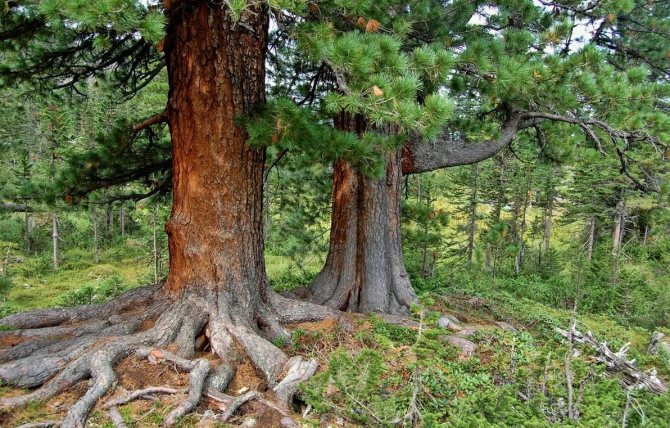

Economic value and application [edit | edit code]
Wood [edit | edit code]
Siberian cedar wood is soft, light and durable, with a pleasant smell, highly valued, used, in particular, for the production of pencils, has a beautiful texture, shades from pink and light beige to soft chocolate and dark brown. It does not lend itself to moisture and is not eaten away by bugs, is almost not subject to rotting, a wormhole. Easy to process, planes very well, polishes and dries with little or no cracking. Due to these properties, cedar wood is used in the manufacture of furniture, handicrafts, housing, and interior decoration. Siberian cedar wood has excellent resonance properties: pianos, harps, guitars are made from it [3].
The stock of wood in middle-aged cedar forests is 260-560 m³ / ha [7].
The stumps remaining on the felling sites are used for tar smoking.
In traditional crafts, besides wood, thin cedar roots are used. Vessels of various shapes and sizes are woven from them - rhizomes.
Pine nut [edit | edit code]
"Pine nuts" is a valuable food product that can be eaten both raw and after heat treatment. By the amount of phosphatide phosphorus, pine nuts are superior to all other types of nuts and oilseeds and are equal to soybeans - the richest source of lecithin among plant materials. The daily human need for such deficient trace elements as manganese, copper, zinc and cobalt is provided by 100 g of nut kernels. They are also a rich source of iodine.Among carbohydrates, cedar seeds contain (%): starch - 5.80; glucose - 2.83; dextrins - 2.26; fiber - 2.21. Fructose and sucrose make up only 0.25 and 0.44%. Pine nut protein is characterized by a high content of lysine, methionine and tryptophan - the most deficient essential amino acids, usually limiting the biological value of proteins.
The harvest of “nuts” in various types of cedar forests in Western Siberia is from 10 to 640 kg / ha (wide-herb cedar forests are the most productive, sphagnum forests are low-yielding) [7].
"Pine nut" is a popular name; from a scientific point of view, the seeds of gymnosperms cannot have the "nut" type of fruit.
Pine nut oil [edit | edit code]
Nuts are used to make cedar nut oil. It contains twice as much vitamin E as walnuts and almonds, as well as vitamin P (essential fatty acids). In terms of the amount of fatty acids, cedar nut oil surpasses peanut, soybean, sunflower, corn and cottonseed oils. Cedar oil is used in the food industry, medicine, soap making, drying oil and varnishes. Oilcake is used as a food product for humans and animals, and since the end of the 20th century - in the production of biologically active additives.
Medical Uses [edit | edit code]
Cedar needles treat scurvy, resin - wounds, cuts and burns. In folk medicine, the infusion of the shell of fresh nuts is drunk for deafness, nervous disorders, liver and kidney diseases, for hemorrhoids; hands and feet are washed with a decoction of the shell to remove hairiness [15].
Pine nut oil is a complete source of polyunsaturated fatty acids (PUFA). To meet the daily requirement of essential fatty acids, it is necessary to consume about 20 ml of oil daily. It has a cholesterol-lowering effect, contributes to the normalization of the lipid spectrum of blood (HDL cholesterol level increased by 29%, and LDL cholesterol level decreased by 21%, atherogenic index decreased by 40%), decrease in systolic blood pressure and decrease in excess body weight [16].
Chopped pine nuts inhibit gastric secretion, the production of gastric juice decreases and its acidity decreases. One hundred grams of pine nuts covers the daily human need for vitamin E [17].
The prophylactic efficacy of cedar nut oil has been confirmed when it is included in the diet of patients with cardiovascular disease [18].
From the sap of Siberian cedar pine (as well as Siberian larch), natural chewing gum is produced in Russia for the prevention of oral diseases.
Eating [edit | edit code]
It is possible to produce confectionery products enriched with protein products from the kernels of Siberian pine nuts, which can be recommended for functional and therapeutic and prophylactic nutrition [19]. On the basis of cedar nut oil, formulations have been developed for three-component mixtures of vegetable oils, optimized in the composition of ω-3 and ω-6 acids and intended for functional nutrition. Combined products with cedar cake have been developed: cheeses, mayonnaises, pastry pastes, instant cereals, food concentrates - semi-finished flour confectionery products, bakery products. [eighteen]
Using
People have long noticed the beneficial properties of the cedar tree and found it used in all spheres of human activity: houses, furniture and other wooden crafts are made from wood. Russian cedars are also used in medicine and cooking: they prepare food from seeds, cedar vegetable oil, from the bark of needles, resin - prepare medicinal decoctions, cedar essential oil.
Butter
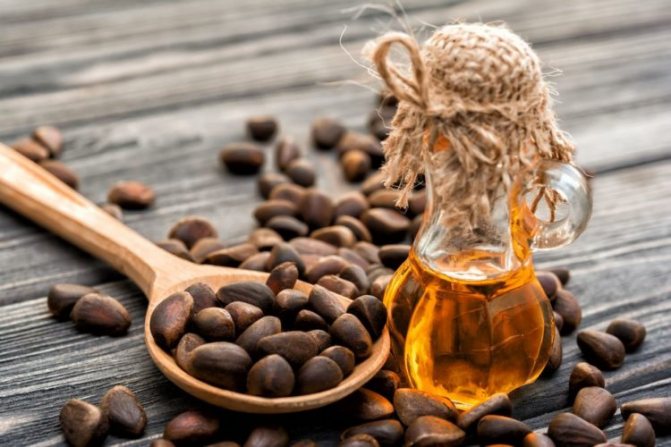

Cedarwood oil is so unique that there is no oil equal to it in terms of its properties. Pine nut oil is produced by pressing from the seeds of Siberian pine, and it contains all the beneficial properties inherent in olive, coconut, sea buckthorn and burdock oils.For example, pine nut oil contains five times more vitamin E than olive oil.
Essential oil of cedar is obtained both from a real tree and from Siberian pine, thuja canadensis and other conifers (in terms of properties they differ little from each other and the main difference in the ratio of components).
Unlike vegetable oil, cedar essential oil is made from crushed bark, wood, young shoots. Essential oil of cedar has excellent antiseptic, soothing, antiviral properties, it is successfully used in cosmetology. The only thing is that the essential oil of cedar is not used inside: it is inhaled, applied to the skin, healing baths and other procedures are done.
Sap
Cedar resin (tree resin) is also successfully used in treatment, which undergoes preliminary processing: it cannot be used in its pure form, since it quickly hardens.
Basically, cedar sap is also successfully used in solutions that can be prepared by yourself or purchased in a store. It is simple to make it: cedar resin dissolves well in any vegetable oil at a temperature of 50 degrees, and since the components do not overheat, it does not lose its healing properties and, if used correctly, cures.
Cedar resin is also sold in stores, but the person purchasing the solution should take into account that, most likely, he will buy a fake. For example, a solution called "Gum oil" is made from corn and nut oils, and "Turpentine oil" is gum turpentine, since it is obtained when the cedar resin is distilled with water or steam (in terms of its useful properties, such a solution is very different from that dissolved in resin oil).
Seeds
If you figure out what a pine nut is, it turns out that cedar seeds have nothing to do with real nuts, which are the fruits of shrubs and trees of the walnut family. The seeds of real cedar are inedible, and the nuts we know are the seeds of cedar pine.
However, this does not at all reduce the beneficial properties of seeds: they, as well as the pine nut oil and tincture made from them, are used in medicine, dietetics, cosmetology, and in aromatherapy sessions. For example, pine nuts are often used to improve immunity, vision, to prevent cardiovascular diseases, atherosclerosis, diabetes, and anemia.
Pine nuts are rich in vitamins A, B, C, D, E, P, and contain a huge amount of minerals, including manganese, copper, magnesium, zinc, iron, phosphorus, iodine. Despite the fact that the kernel of the pine nut contains a lot of fats, protein and amino acids such as tryptophan, methionine, lysine, it is actively used for weight loss: pine nuts are not only nutritious, but stimulate the activity of the hormone cholecystokinin, which signals the brain to satiety. Pine nut oil made from seeds is of particular benefit to the body.
Pine nut tincture is used not only as an alcoholic drink, but also as a remedy for diseases of the musculoskeletal system. Interestingly, for the preparation of tinctures and balsams, in addition to the kernel, pine nut shells are often used: the resulting product is an excellent anti-inflammatory medicine.
Do not forget that speaking about pine nuts: the benefits and harms go hand in hand. Firstly, if you eat more than 50 g per day, it can harm the body. Also, they should not be used together with meat and dairy products, the protein of which prevents the absorption of food. Pine nuts are not recommended for small children, as they can clog the airways.
It is necessary to purchase only unrefined kernels, since when they come into contact with light and oxygen, they go rancid and absorb harmful substances. This means that if the nuts and the dishes that were made from them are bitter, such food should be thrown away, since rancid oil is the strongest poison and it can take from two days to two weeks to restore the body.
Consortium ties [edit | edit code]
Mutually beneficial interspecific consortium ties have historically developed between Siberian cedar and nutcracker. The seeds serve the nutcracker as the main food and, as a result, in the course of evolution, this was reflected in the structure of some of its organs and the way of life, and the instinct of storing food for the winter with the nutcracker turned out to be useful for the natural renewal of the Siberian cedar and the formation of cedar forests. Creating stocks of seeds, the nutcracker hides them in small (up to 30 nuts) portions in numerous places, more or less evenly located on uncovered and forested areas in the upper soil horizons and in the moss cover. Due to this, in places where seeds were lost by nutcrackers or were not used for some other reason, single or group shoots are formed [11].
In addition to nutcracker, chipmunk, squirrel, sable, bear, woodpecker, nuthatch, etc. feed on Siberian cedar seeds, but they cannot be called obligate consorts of cedar pine: seeds of this breed are not required in the diet of these animals. Only the sable, as shown by observations [12], requires a certain amount of seeds for normal life and reproduction.
Genetics [edit | edit code]
In 2019, studies of the polymorphism of Siberian cedar pine were carried out at five loci (RPS-124, RPS-90, PTTX-2123, PTTX-2146, PICO) with an annealing temperature of 55 ˚С primers. The analysis showed that according to RPS-124, RPS-90, PTTX-2123, the level of variability is small, the trees are monomorphic, however, according to PTTX-2146, a third allelic variant was revealed, which is characteristic of dwarf pine, which indicates the likelihood of distant hybridization. The PICO allele shows the highest level of genetic polymorphism; four forms of fast alleles have been identified. Scientists came to the conclusion that the pine of the Siberian cedar South Yakut population (Olekminsky district of Yakutia) is characterized by relative monomorphism, and in some cenopopulations (the settlement of Neryuktyayinsky 2nd) there is polymorphism in PICO and PTTX-2146 [20].
Products
Cedar wood is a valuable species, but its use is limited by the fact that at present, commercial timber is harvested only during sanitary felling. In the trading network, its offers are limited, and the price is quite high. All this leads to the fact that cedar wood has become an elite class.
It is used for finishing the interior surfaces of expensive yachts, interior interiors. Cedar wood is capable of releasing antibacterial substances, heals the air in the room. Products made from this material are in demand, despite the high price.
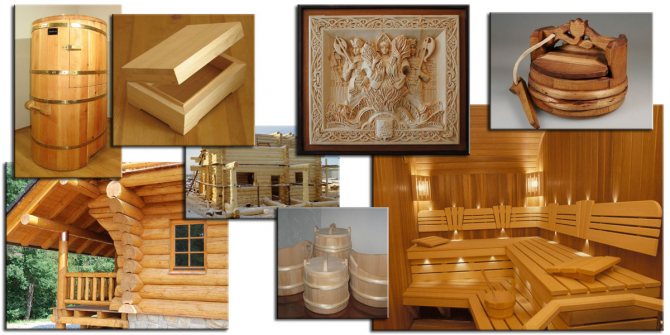

In the past, cedar was used in the construction of log houses. Due to the fact that cedar wood is a natural antiseptic, people in such houses were less sick, and the indoor air had a healing effect. Cedar planks were used to lay the floors in the huts, to make chests of drawers and chests.
Currently, cedar lining is used for interior decoration of baths and saunas. Antiseptic substances released by wood create a healthy microclimate in such rooms, prevent the occurrence of various colds.
Furniture was also made from cedar. Due to its resistance to moisture, cedar garden furniture has served for many years without losing its operational properties.
The cedar wood is most widely used in pencil production. Due to the fact that cedar is well cut both along and across the fibers, does not chip, and is straight-layered, it turned out to be an ideal material for the production of pencil rods.
Cedar is often used in the manufacture of various containers for storing food products - barrels, chests, boxes, etc. In such containers, food does not deteriorate for a long time, and remains fresh.
Until now, they try to use containers made of cedar wood for the transportation of granular caviar.
Today, cedar wood is used in the manufacture of exclusive furniture, for high-quality carved artwork.
Cedar logs and beams are in great demand now in the production of wooden cottages. In addition to the fact that such houses have an excellent appearance, they have good strength characteristics, are able to resist heavy physical exertion, and create a special healthy microclimate inside the building.
Cedar wood has good resonance properties and is used in the manufacture of musical instruments.
Cedar wood lends itself very well to turning on lathes; various jugs, bowls, trays are made from it. Very high-quality kitchen cutting boards are obtained from cedar wood, which serve for a long time without losing their properties. At the same time, they have antiseptic properties, since cedar wood releases special substances that kill microbes.
See also:
Wood species
Wood processing
Everything you need to know about dwarf cedar
It differs from other species of the pine family in that it spreads along the ground. It is considered a half-tree - half-bush. Does not grow more than one and a half meters. What is the use of planting this pine on your territory? Elderberry not only fits wonderfully into the landscape of the site, but also has useful properties. Nut cake is used in cooking, for example, for making halva, delicious filling for sweets, flour.
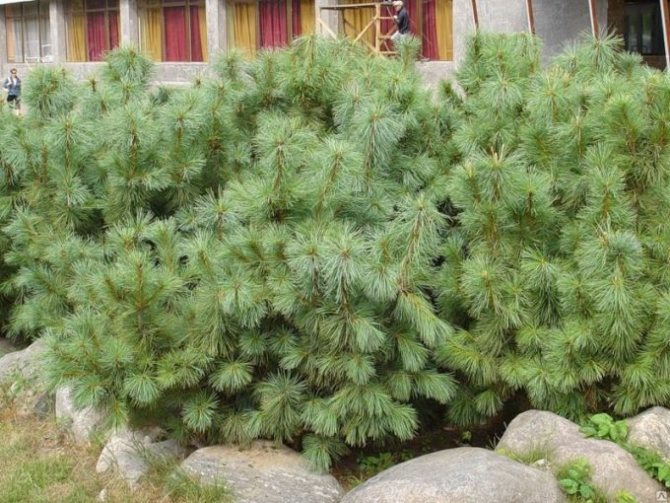

Healing properties
- It releases the largest amount of phytoncides that kill all pathogens. The scent of this coniferous tree is useful to simply inhale;
- Dwarf plant oil has antibacterial properties;
- Pine essential oils have analgesic, sedative and antipyretic properties. Used for inhalation and soothing baths;
- With needles or dwarf buds, inhalation is recommended for coughing;
- This cedar tree is also used in perfumery. It has a positive effect on skin and hair. You can find cedar dwarf shampoos on store shelves.


How to grow this miracle - a tree
- Elderberry is rather unpretentious to the soil. Loves sunny places, but also tolerates partial shade comfortably. The only thing that pine does not recognize is places with stagnant water;
- It is recommended to plant dwarf trees in early May by sprouts or layering;
- This tree does not need any special care, except for maintaining moisture in the soil.
Title [edit | edit code]
From a scientific point of view (biological taxonomy), this species belongs to the Pine genus (a relative of the Scots pine, pine pine with similar seeds), and not to the Cedar genus (for example, the species are Lebanese cedar, Atlas cedar or Himalayan cedar), the cones of which are very different from pine.
In Russia, the plant gained fame at the turn of the 17th-18th centuries under the popular name "Siberian cedar", or simply "cedar" [5]. For example, in the so-called Siberian chronicle of Savva Esipov of the 17th century: "... on this same stone there is a different tree: cedar and other ..." [6].
Do not replant mature trees and place them correctly on the site.
- Mature Siberian pines do not tolerate transplanting very well., since they have a branched root system, which is severely damaged when excavated. Plants get sick for a long time after transplantation and, as a result, may still not survive. To increase the chances of survival, treat the plant with a solution of Zircon (spraying the crown and watering, add 4 drops per 1 liter).
- According to SNiP norms, tall trees are located at a distance of at least 3 meters from the fence... If there are no neighbors behind the fence, then leave at least a meter, and so that the branches do not interfere, the lower shoots are simply cut off over time.
Heraldry [edit | edit code]
The image of cedar pine and cones is used in the heraldry of Russia.
All types of cedar trees at any time of the year are distinguished by a high decorative crown, and because of their healing properties, this culture is considered one of the most valuable plants. In the middle lane, when growing these trees, Siberian, European and Korean cedars are used. Dwarf cedar is also extremely popular. Photos and descriptions of different types of cedar tree - for your attention on this page.
Taxonomy [edit | edit code]
- Pinus sibirica
Du Tour, 1803, Dict. Sci. Nat. (ed. 2), 18:18.
Synonyms [edit | edit code]
- Pinus cembra var. sibirica (Du Tour) G. Don in J. C. Loudon, Hort. Brit .: 387 (1830).
- Pinus cembra subsp. sibirica (Du Tour) Krylov, Fl. Alt. 7: 1724 (1914).
- Pinus cembra var. sibirica (Du Tour) A.E. Murray, Kalmia 13: 22 (1983).
- Pinus coronans Litv. , Trudy Bot. Muz. Imp. Akad. Nauk 11:23 (1913).
- Pinus cembra f. kairamoi Schwer. , Mitt. Deutsch. Dendrol. Ges. 36: 185 (1926).
- Pinus cembra f. coronans (Litv.) Krylov, Fl. Zapadnoy Sibiri 1:79 (1927).
- Pinus arolla Petrov, Fl. Iakut .: 63 (1930).
- Pinus hingganensis H. J. Zhang, Bull. Bot. Res., Harbin 5 (1): 151 (1985).
- Pinus sibirica var. hingganensis (H. J. Zhang) Silba, Phytologia 68: 61 (1990).
- Pinus sibirica subsp. hingganensis (H. J. Zhang) Silba, J. Int. Conifer Preserv. Soc. 16: 33 (2009).
How to grow and care for a cedar tree
Cedar gives the garden a look of solidity and power, firmness and gaiety. The tree does not need constant maintenance.
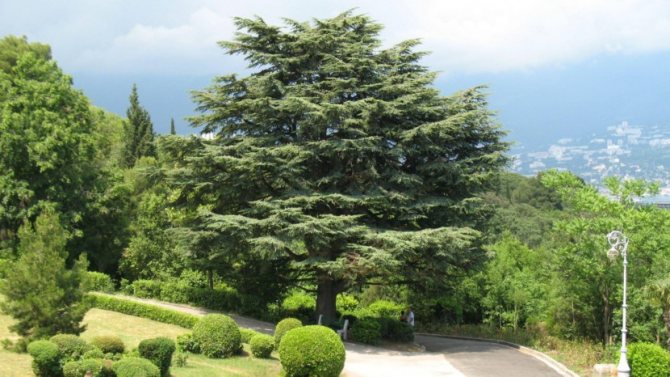

It is necessary to plant seedlings in a well-lit area at a distance of 4-5 m. You need to develop a crown on a low trunk. It should be branched and have many peaks.
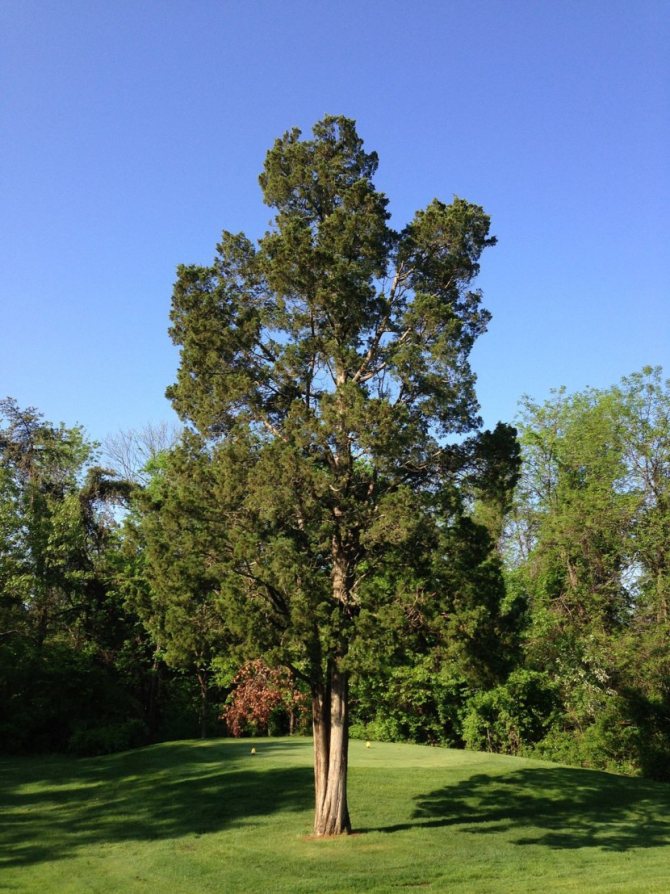

It is necessary to break out the buds that grow on the sides in March-April, until the growing season begins. The area for the cedar should be large, with suitable soil.
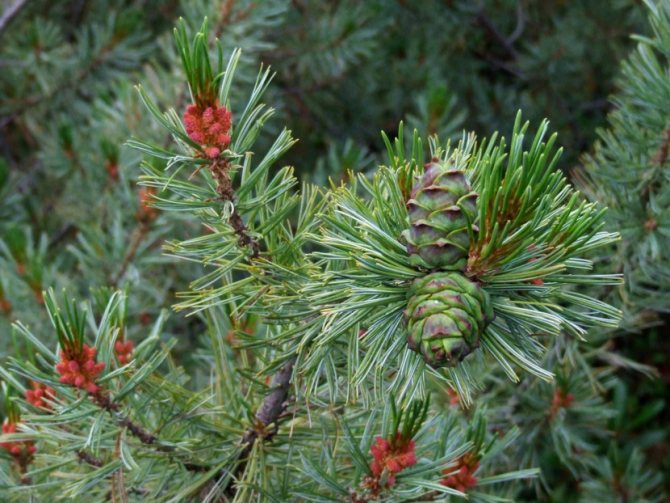

If you plant the second method, then whorls will appear for 4-5 years, the tree will need a shade. Cedar can also grow in sphagnum bogs. The tree practically does not depend on the ambient temperature - it endures both frosts and droughts.
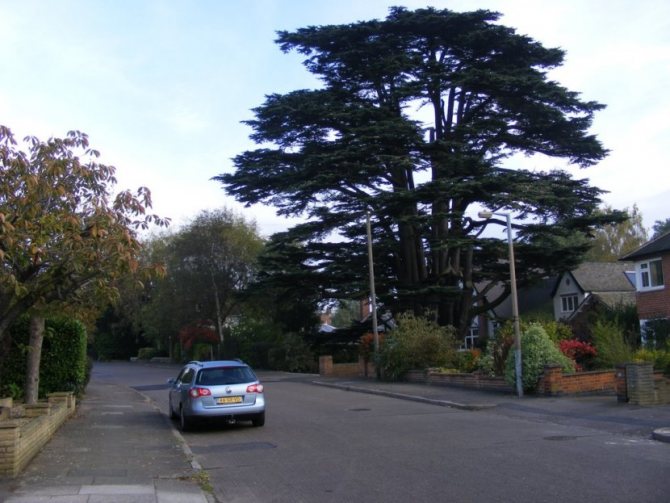

Characteristics
Representatives of the Cedar genus are truly gigantic trees, whose height in wild growing conditions often reaches 40-60 m... The crown is massive and spreading, the bark is dark gray, smooth on young plants and scaly on older plants. Branches can be shortened and elongated, and on the latter there are spirally located needles. It is stiff and prickly to the touch, with three or four edges, united in bunches of five needles. Depending on the type of plant, its color can vary from blue or dark green to gray-silver.
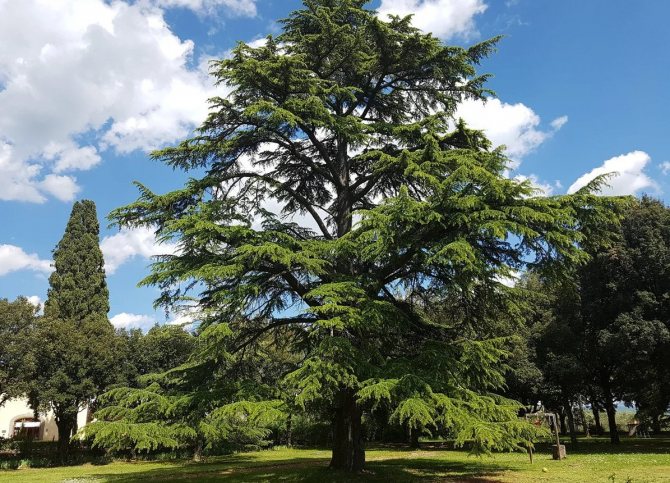

The spikelets of the tree are placed singly at the ends of the short branches. All of them are erect, in the lower part, supplemented with bunches of needles. Female specimens reach a length of 5 cm and have numerous, spirally placed stamens, with two interconnected anthers covered with cracks. The pollen itself is enclosed in air sacs.

